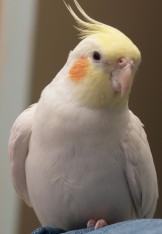Why do we put up half-finished web pages? You can see a few here for the next couple of weeks. The reason we do this is that we are a different kind of technical company, with headquarters on the Spirit Lake Nation. Over a decade ago (I am SO old), my research was focusing on 'What is the disadvantage of disadvantaged children?'
Children of ministers and graduate students usually live in low-income homes, and yet they tend to do quite well in school and grow up, most of them, to do far better professionally and in their personal lives than do children from other low-income homes. Children who are disadvantaged are disadvantaged in more than money. They are lacking a whole host of experiences.
One experience a lot of children don't get on the reservation is the opportunity to see stockbrokers, scientists, web designers and software engineers at work. If you are from a more affluent community, you learn a larger vocabulary (words like 'affluent' because it is considered 'common' to refer to people as 'rich'). You also have more opportunities. If you think you might like to be a cardiologist or a diplomat or a trial lawyer, you probably have a relative or family friend who can advise you, who can give you some inside view of what the job is like.
We are trying to offer that on our website. We have always opened up our work in progress so youth (and adults) on the reservation can look over our shoulders as we work.
- The first step is to collect the information we want to include. This may be in our own files from articles we have written in the past, it may be articles we have gotten permission from others to include, or, as with the case of the self-advocacy pages I just uploaded, it may be written by one of our staff members particularly for this site.
- Next, I create the basic web pages, which are what I just uploaded today, editing the articles I get from the staff, or sometimes that I write myself, and adding relevant pictures and links. I don't always post these before they're done but I thought it would be good to let people see each step.
- After most of the web pages are done, I create the template. That is the menus you see on the side and across the top and the contact information on the bottom.
 I apply the template to all of the pages. Upload the revised pages and there you have the first draft.
I apply the template to all of the pages. Upload the revised pages and there you have the first draft.- We use the pages in a workshop to teach, get feedback from our pilot group and staff and make changes. Sometimes these are really major changes.
- Although the first five steps are most of the work, maintaining the site is key. After we have what we consider our 'final' version, pages we linked to move or are taken down and we need to change the links. Sometimes there is a new law or a new program funded and we need to change the information on the page. This last step is often forgotten, but it is really important. There are millions of sites out there that someone put up and forgot about. I am sure you have come across some yourself. We use a program called Xenu to automatically check the links. When your site has thousands of pages, like ours does, it is a zillion times faster than doing it manually.
So, there you have it, a bird's eye view of how to create a new section of a website.

Leave a comment